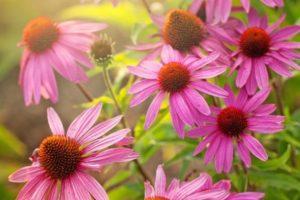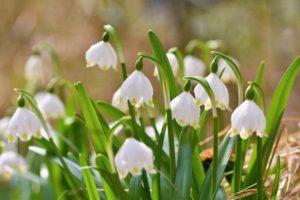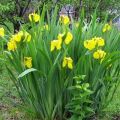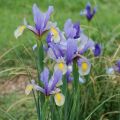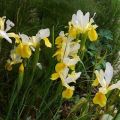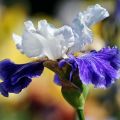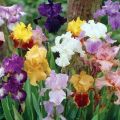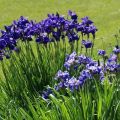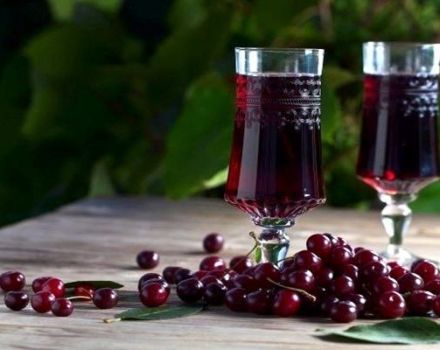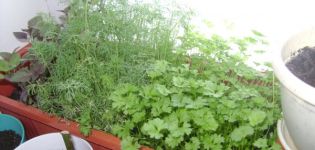Description of the best varieties of mesh irises, planting, cultivation and care
People who choose to grow perennial bulbous flowers often plant netted irises. These compact flowers are ideal for decorating a small flower bed. Before proceeding with cultivation, you need to understand the peculiarities of planting and caring for mesh irises.
Content
- 1 Iris reticulated: biological description
- 2 Varieties and varieties
- 3 How to grow outdoors?
- 4 Propagation of netted iris by seeds
- 5 Spring and summer care: watering and feeding
- 6 Pruning and covering iris for the winter
- 7 Diseases and pests: preventive measures
- 8 Iridodictium in landscape design
- 9 Conclusion
Iris reticulated: biological description
It is recommended to familiarize yourself with the biological description of the plant in advance. This will help you learn more about the characteristic features of this type of iris.
A netted iris or iridodictium is a small bulbous plant that grows up to 15-17 centimeters in height. The main feature of this flower is called its early flowering, which begins in spring. With the onset of summer heat, flowering stops, and the aboveground part of the plant dries up.
During the flowering period, flowers appear on the bushes with a diameter of 6-8 centimeters. They can be blue, purple, white, red or pink in color. Some varieties of iridodictium have reddish blotches on the flower petals. Also, on iris bushes, capsules are formed, inside which there are seeds. Ripe seeds are harvested in summer and immediately planted in the ground.
Varieties and varieties
There are several varieties of reticulated iris that are popular among flower growers.
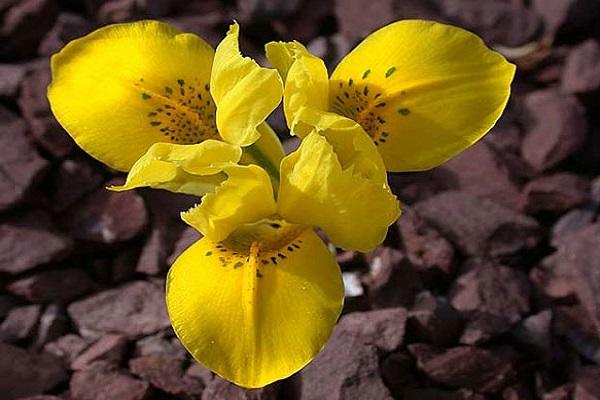
Dunford's Iris Denford
It is the earliest flowering flower variety and blooms in mid-April. Bushes grow up to 10 centimeters in height, which allows them to be planted in compact pots. In 1-2 months after planting, flowers with yellow petals appear on Denford seedlings.
The variety can be grown outdoors as it is resistant to frost and high humidity. There are several characteristic features that distinguish Denford from other irises:
- diminutiveness;
- sterility of flowers;
- absence of the upper row of petals.
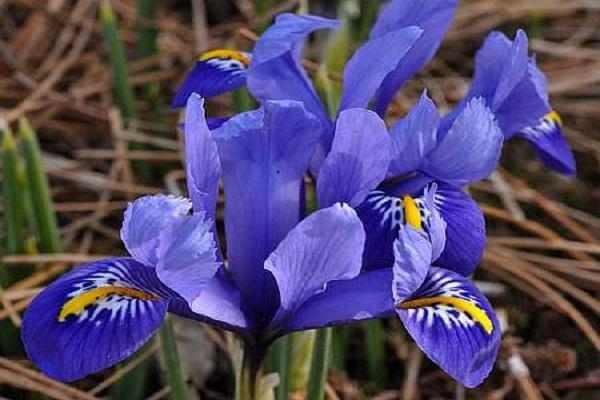
Hybrid Katarina Hodgkin
A hybrid variety of flowers that was bred in the 60s of the last century. Many growers consider Katharina Hodgkin to be the best variety of bulbous irises. A distinctive feature of the plant is its huge flowers, the diameter of which reaches ten centimeters. The petals of the hybrid have a bluish tint and a pleasant, fresh scent.
The main advantages of Katharina Hodgkin include resistance to waterlogged soils and temperature changes. The flower is grown in one place for 3-5 years, after which it will have to be transplanted.
Pauline
The plant belongs to the most beautiful varieties of reticulated irises, which bloom in the first half of March. Paulina bulbs are ovoid and slightly elongated, their surface is covered with fleshy and dense scales. The leaves of the plant are oblong and have a bright green color.
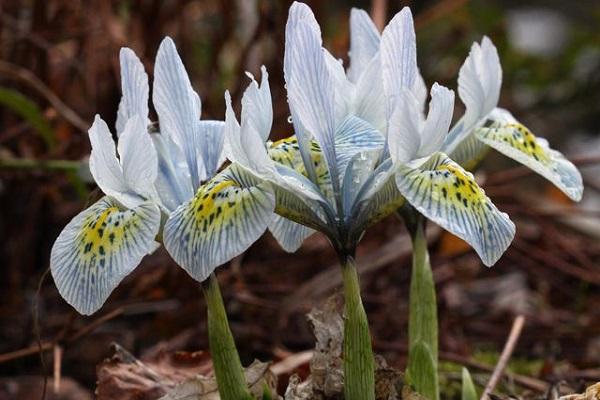
Paulina's flower stalk grows up to twenty-five centimeters in height. The flowers are painted in a rich purple color, their diameter reaches nine centimeters. In order for the plant to bloom on time, it is planted in the soil no earlier than mid-September.
Jenin
People who want to admire the flowers in the middle of spring often plant Jenin. Flowering begins in April and lasts for one and a half months. Jenin's dwarf bush grows up to 12-15 centimeters, the diameter of the flowers is 6-8 centimeters.
Jenin is not afraid of night frosts, and therefore she is grown outdoors. You can also plant it in pots and grow it indoors.
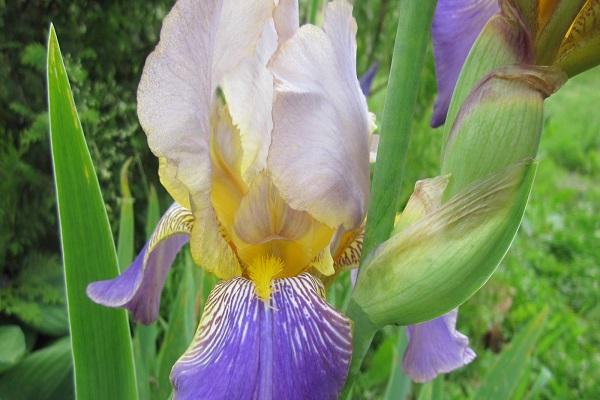
Joyce
This is a unique plant that impresses with its charming beauty. Joyce begins to bloom immediately after the snow melts and the soil warms up to a temperature of 5-6 degrees. Among the features of the variety, the rapid growth and bright blue color of the petals are distinguished.
Dwarf bushes reach ten centimeters, after which they stop growing. Most often, flowering begins in March, but sometimes flowers appear in April. The diameter of the flowers does not exceed eight centimeters. Joyce can be grown without transplant for four years. Then the bulbs will have to be dug up and planted elsewhere.
Harmony
An early flowering plant, which is covered with miniature flowers with a diameter of one and a half centimeters. Blossoming of Harmony begins in spring, when the night frosts subside. The variety has large bulbs covered with dense scales that protect them from freezing.
Different varieties of Harmony are distinguished, which differ from each other by the coloring of the petals. They can be red, orange, purple, yellow, white and blue. Some petals are bicolor.

Natasha
Among the most winter-hardy types of irises, the Natasha variety is distinguished, which is resistant to frost. The height of the bush reaches fifteen centimeters when grown outdoors. In a greenhouse, bushes grow up to 20-25 centimeters.
Natasha has a late flowering, starting in the twenties of May. The flowers fade in 30-35 days when the summer drought begins. In summer, the ground part of the flower dies off completely. Re-germination of bulbs begins in spring.
How to grow outdoors?
To properly grow irises in the garden, you need to familiarize yourself with the peculiarities of planting flowers in the open field.
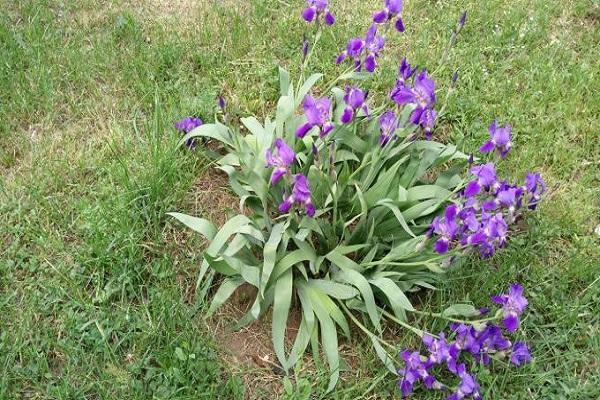
Soil preparation
Before planting any plant, they are engaged in preliminary soil preparation. For growing reticulated irises, areas with slightly acidic or neutral soils are selected, in which the acidity level does not exceed 6.8 pH. If you plant a flower in soil with high acidity, the bushes will stop blooming and begin to grow strongly. To lower the acidity of the soil, dolomite flour, ash, chalk and lime mortar are added to the ground.
Experienced growers do not recommend planting iris bulbs in areas with heavy soils, as they will grow more slowly under these conditions. To improve the growth of flowers, the entire area is dug up in advance and fertilized with organic dressings.
Planting bulbs
Most often, iris bulbs are planted in autumn or late summer, when all the flowers stop blooming.It is impossible to delay planting until mid-autumn, since late planted plants do not take root well in a new place.
During the planting of the bulbs, holes are made in the flower bed, the depth of which should be 10-11 centimeters. However, if the bulbs are too large, the size of the holes is increased by 3-5 centimeters. The distance between the dug holes should not be less than 20 centimeters. If you plant irises too close together, they will grow slower and bloom less well.
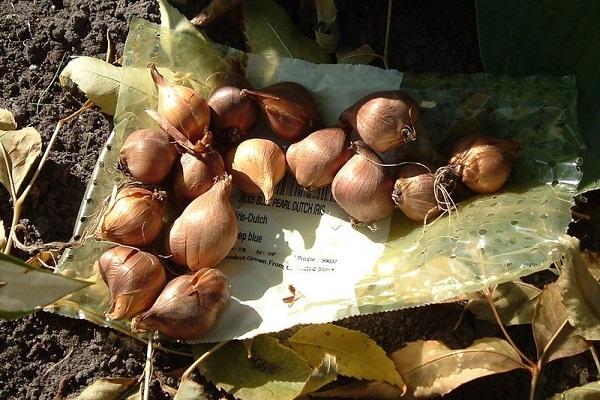
Propagation of netted iris by seeds
There are several methods for propagating irises, but many gardeners use seeds for this. To propagate a flower in this way, only ripe seeds must be used. Full maturation occurs a few weeks after flowering.
Ripe seeds are collected from flower pods, soaked in water, germinated for 2-3 days, and only after that they are planted in the soil. Seeds are planted in autumn or spring, after warming.
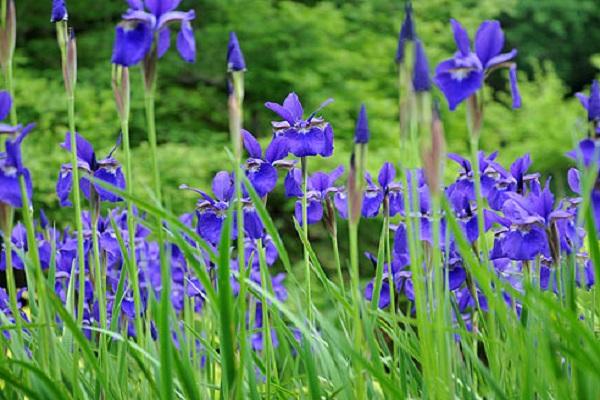
Spring and summer care: watering and feeding
Irises, like other flowers, need proper care. Planted bushes need to be watered regularly so that they grow faster. However, they must be watered carefully so that the soil is not always moist. High soil moisture leads to the development of root rot and plant death. Florists advise to water the irises with heated water 2-3 times a week.
Iris seedlings are highly sensitive to chemical components, and therefore only organic fertilizers are used as fertilizers. Humus with compost and wood ash is added to the soil.
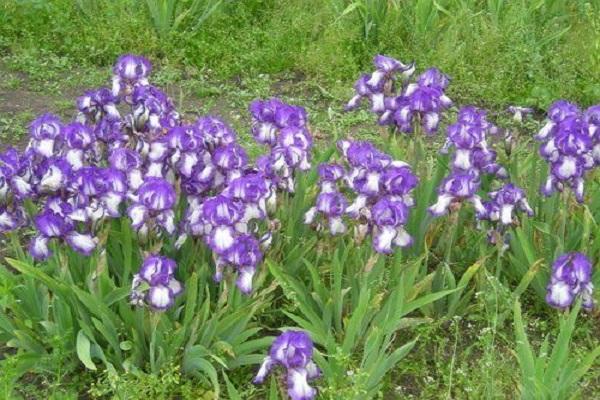
Pruning and covering iris for the winter
Before the onset of winter frosts, all flowers are pre-cut and insulated using a special shelter. To trim the aerial part of the flower, use pruners or ordinary scissors.
After pruning, they are engaged in warming the bulbs. They use straw, dry leaves and tree branches as shelter. They are laid out on the surface of the flower bed in a layer 2-5 centimeters high. The created shelter absorbs excess moisture and reliably protects the iris bulbs from frost.
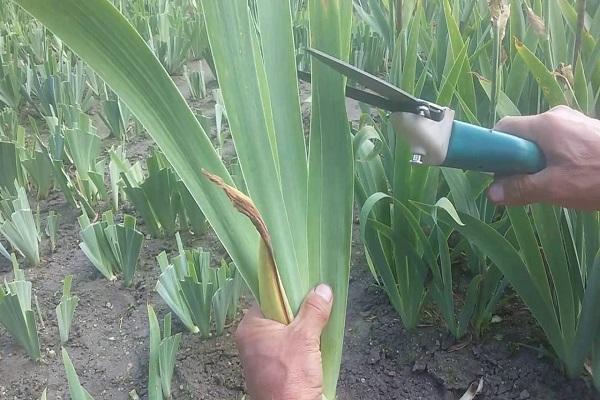
Diseases and pests: preventive measures
People who have been growing irises for a long time often face pests and diseases. The most common disease is bacteriosis, which appears due to waterlogging of the soil. To prevent the development of pathology, it is necessary to properly water the plant. Also, for the prevention of bacteriosis, all bushes are treated with insecticidal preparations, which scare off carriers of the disease.
The most common insects that appear on irises are the bear. They feed on the roots and stems of plants, causing the flowers to die. To prevent the bears from appearing on the seedlings, the soil will have to be dug up, loosened and mixed with ammonia.
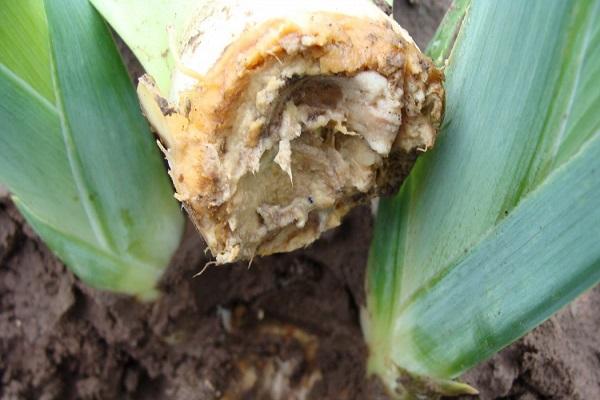
Iridodictium in landscape design
Mesh irises are often used in landscape design to decorate a summer cottage. The popularity of iridodictium is due to the fact that it goes well with other flowers. Experienced flower growers advise planting it along with primrose, crocuses and hyacinths.
Landscape designers use irises to create alpine slides. They are planted on the south side of the lined decorative stones to create a vibrant flower meadow.
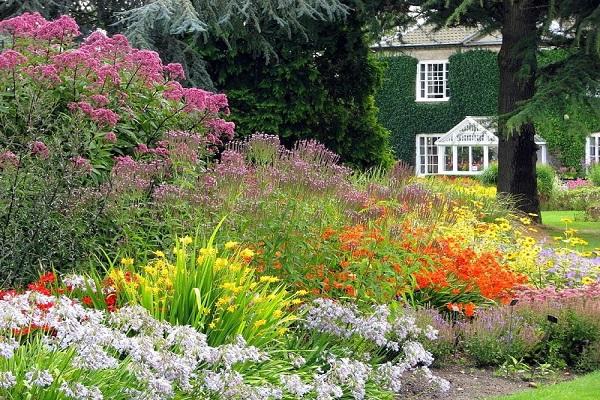
Conclusion
Growers often plant netted irises, which are known for their beauty and compactness. Before planting, you should familiarize yourself with the known varieties of the flower, as well as with the peculiarities of its cultivation and reproduction.
